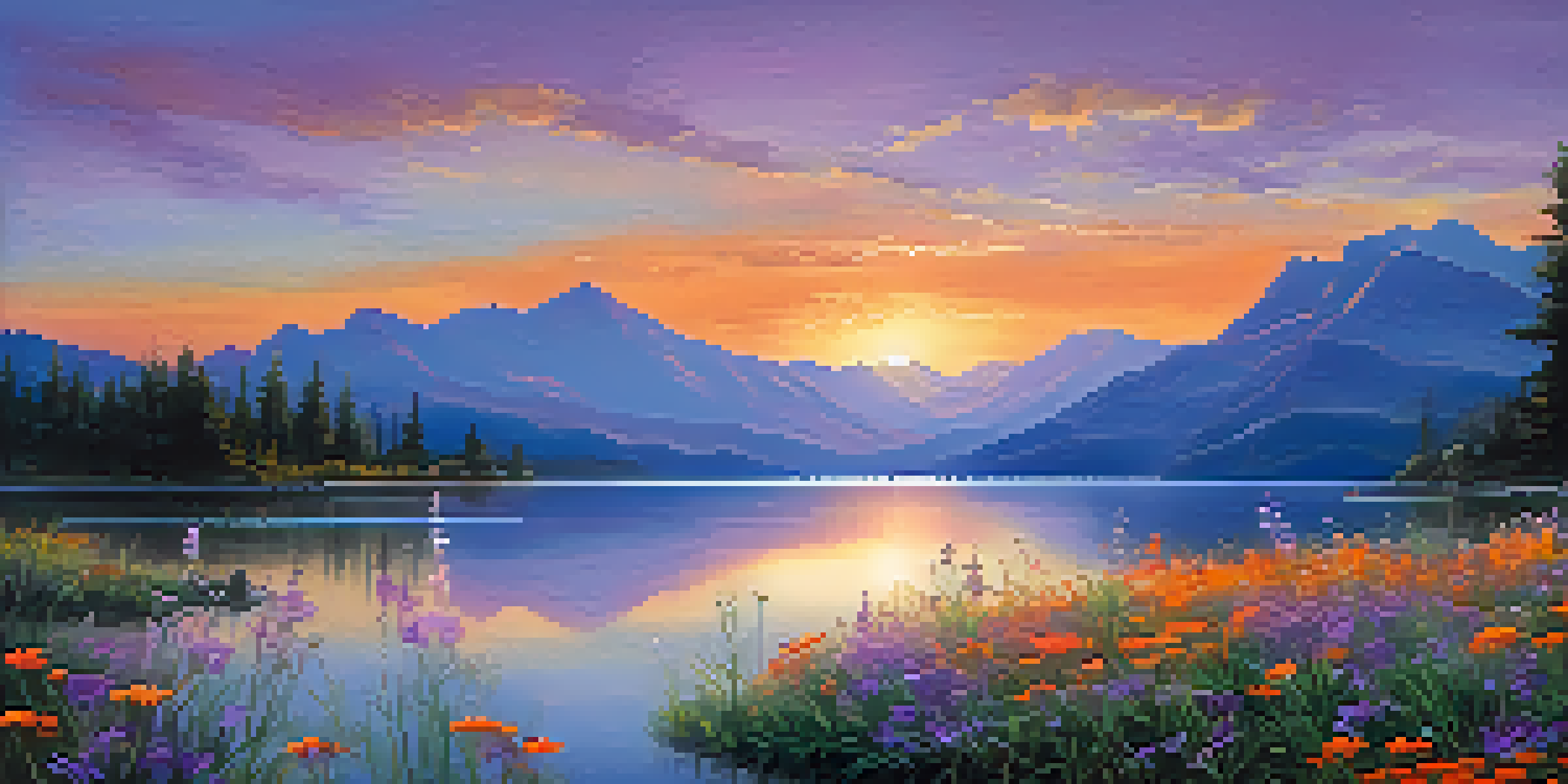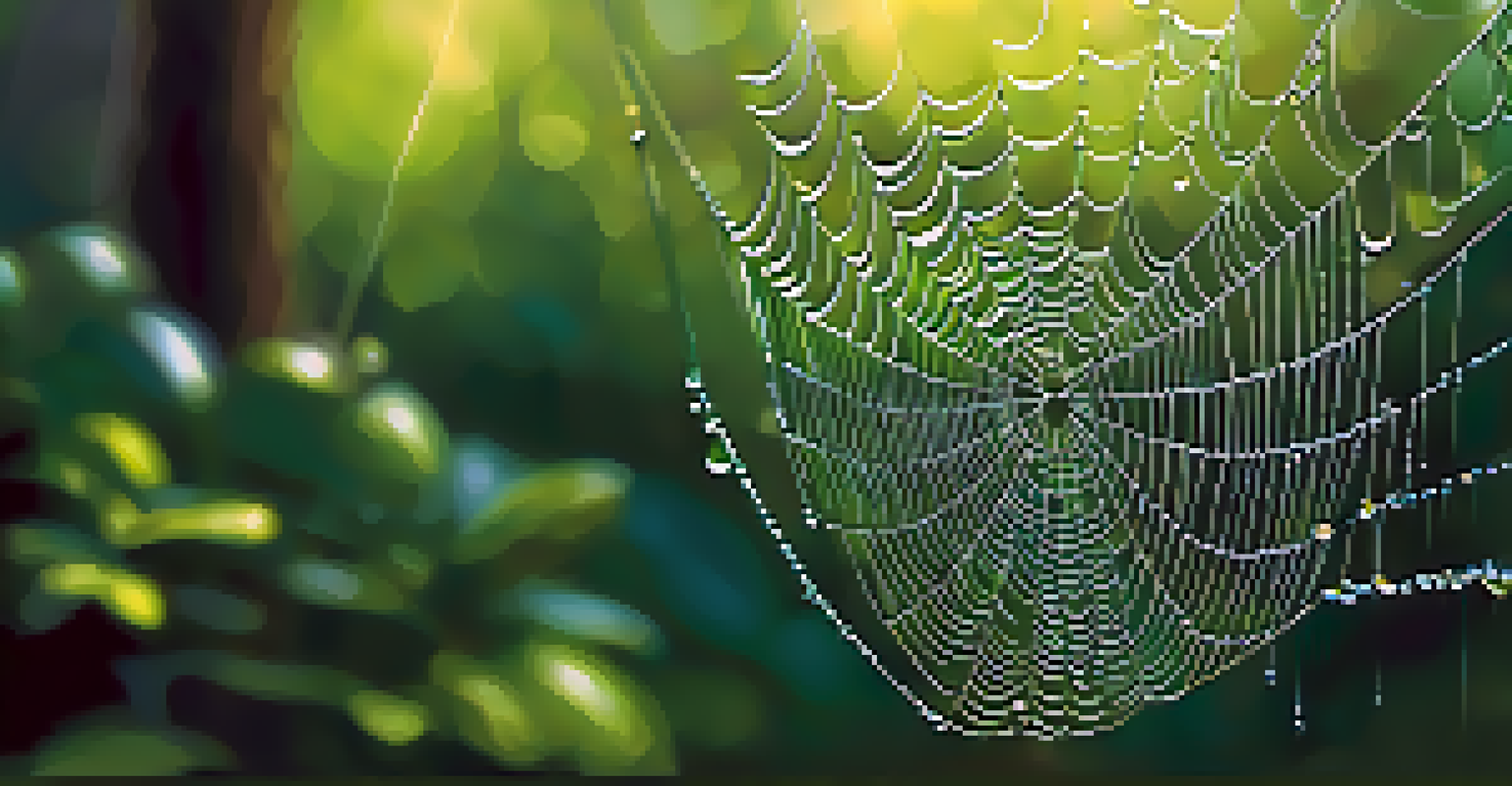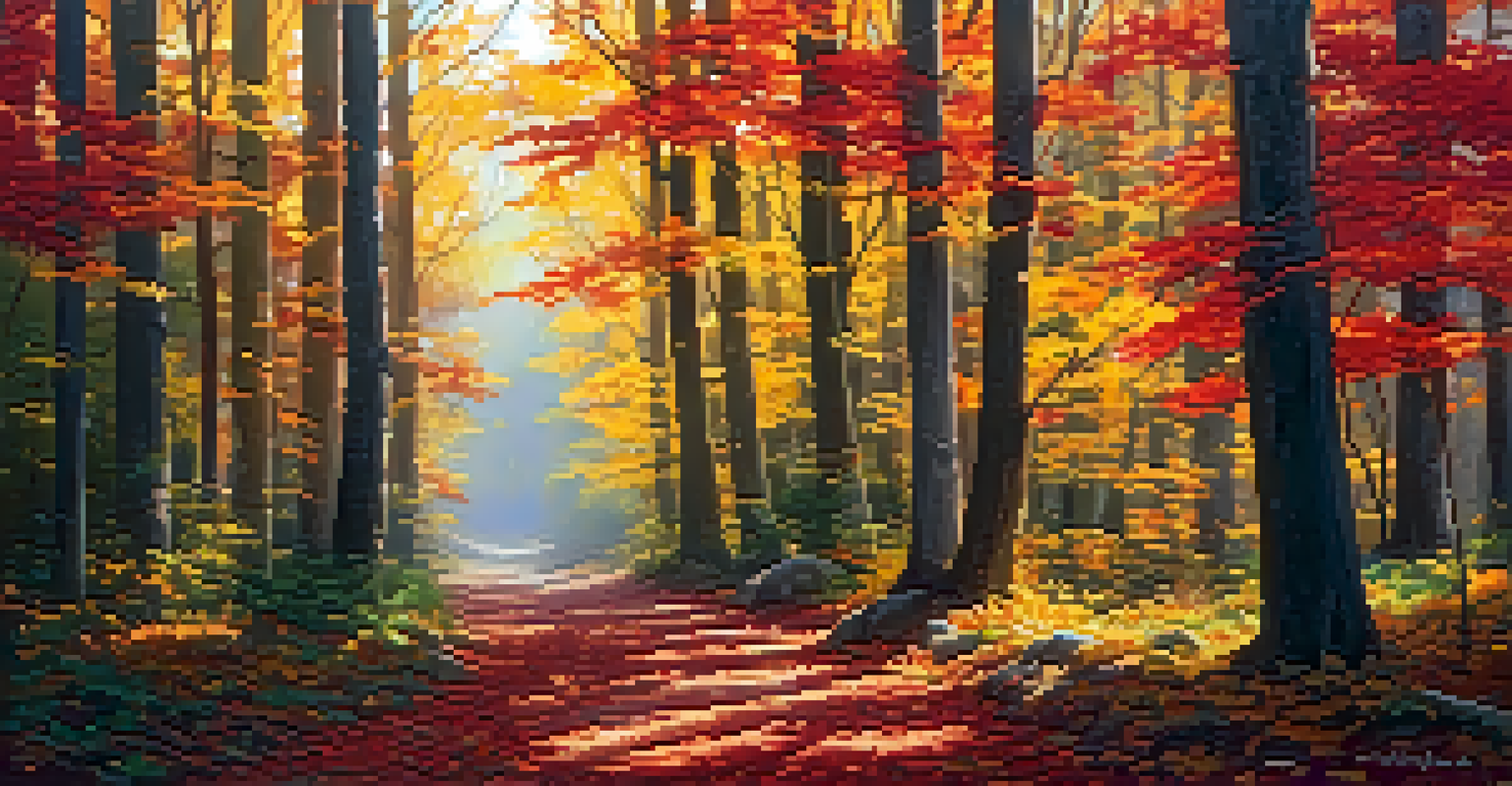The Depiction of Nature in Art and Poetry: A Comparative Study

Understanding the Connection Between Nature and Art
Nature has been a profound source of inspiration for artists throughout history. From the majestic mountains to serene lakes, these elements serve as the backdrop for countless masterpieces. This connection is not merely aesthetic; it reflects a deep-rooted appreciation of the natural world.
Nature is not a place to visit. It is home.
Art captures the essence of nature, allowing viewers to experience its beauty through various mediums, such as painting, sculpture, and photography. Artists often strive to convey emotions tied to nature, creating a bridge between the observer and the environment. This emotional resonance is what makes nature art so compelling.
In this exploration, we will delve into how different artistic movements have represented nature, showcasing its diverse interpretations. By understanding these connections, we can appreciate the vital role nature plays in the creative process.
The Role of Nature in Poetry: A Symbolic Landscape
Poetry serves as a powerful medium for expressing the complexities of nature. Poets often use imagery and symbolism to evoke feelings associated with the natural world, such as tranquility, passion, or even turmoil. This ability to distill emotions into words allows poetry to resonate deeply with readers.

Nature in poetry is not just a backdrop but often a character in its own right. For instance, the changing seasons can symbolize the cycle of life, while storms may represent inner conflict. Through vivid descriptions, poets invite readers to experience nature's beauty and its darker aspects.
Nature Inspires Art and Poetry
Throughout history, nature has served as a profound source of inspiration for artists and poets, reflecting humanity's deep appreciation for the natural world.
As we examine various poets, we'll uncover how their personal experiences with nature shape their work. This exploration reveals the profound impact the natural world can have on human emotions and creativity.
Comparative Analysis: Nature in Visual Art vs. Poetry
While both art and poetry draw inspiration from nature, they approach it differently. Visual art typically captures a moment in time, presenting a static image that invites interpretation. In contrast, poetry flows with rhythm and language, allowing for a dynamic exploration of nature's themes.
The earth has music for those who listen.
For example, a painting of a sunset might evoke feelings of peace, but a poem about the same sunset could delve into the fleeting nature of time and existence. This difference highlights how each medium offers unique insights into the human experience related to nature.
By comparing these two forms, we can appreciate how they complement each other. Together, they create a richer understanding of nature's role in our lives, suggesting that both art and poetry are essential for expressing our relationship with the environment.
Historical Perspectives: Nature Through the Ages
Throughout history, the depiction of nature in art and poetry has evolved significantly. In ancient times, artists and poets celebrated nature's beauty in ways that often reflected their cultural values and beliefs. For instance, in Romanticism, nature was seen as a source of inspiration and a path to spirituality.
The Impressionist movement, on the other hand, focused on capturing the transitory effects of light and color in nature, showcasing its ever-changing beauty. This shift in approach reflects broader changes in society and how people perceive their environment.
Nature Mirrors Human Emotions
Both visual art and poetry utilize nature as a mirror for human emotions, allowing creators to express feelings through natural imagery and symbolism.
By examining these historical perspectives, we can better understand how the depiction of nature has influenced and been influenced by artistic and poetic movements. The interplay between society and nature remains a vital theme in both fields.
Nature as a Reflection of Human Emotion
Both art and poetry often use nature as a mirror for human emotions. For instance, a stormy landscape might symbolize turmoil or conflict within the artist or poet. This close relationship between nature and human emotion reveals how deeply intertwined our feelings are with the world around us.
Artists might use bold colors and dramatic brushstrokes to convey intense emotions, while poets may employ metaphors that draw parallels between their feelings and natural phenomena. This shared language allows for a profound connection between the creator and the audience.
In this section, we will explore specific examples where nature reflects human emotions, illustrating how both mediums can evoke empathy and understanding. The ability to see ourselves in nature enriches our appreciation of both art and poetry.
Modern Interpretations: Nature in Contemporary Art and Poetry
In today's world, the depiction of nature has taken on new meanings, particularly as environmental issues become more pressing. Contemporary artists and poets often highlight themes of conservation and climate change, urging society to reflect on its relationship with the natural world.
This modern interpretation challenges traditional views and invites audiences to engage in dialogue about their role in preserving nature. Artists may create installations using recycled materials, while poets may pen verses that call for action against environmental degradation.
Modern Art Reflects Environmental Concerns
Contemporary artists and poets increasingly address pressing environmental issues in their work, urging society to reflect on and engage with their relationship with nature.
By examining contemporary works, we can see how the portrayal of nature has evolved to address current societal concerns. This shift not only reflects changing attitudes but also emphasizes the importance of nature in our lives today.
Conclusion: The Enduring Bond Between Nature, Art, and Poetry
The exploration of nature in art and poetry reveals an enduring bond that transcends time and culture. Both mediums provide unique perspectives on our relationship with the natural world, enriching our understanding of its beauty and complexity. This connection invites us to reflect on our place within the environment.
As we move forward, it is essential to appreciate and nurture this bond. By engaging with art and poetry, we can cultivate a greater awareness of nature and its significance in our lives. This engagement encourages us to become stewards of the environment, ensuring its preservation for future generations.

Ultimately, the depiction of nature serves as a reminder of our shared humanity and the world we inhabit. Whether through a striking painting or a poignant poem, nature continues to inspire and connect us all.